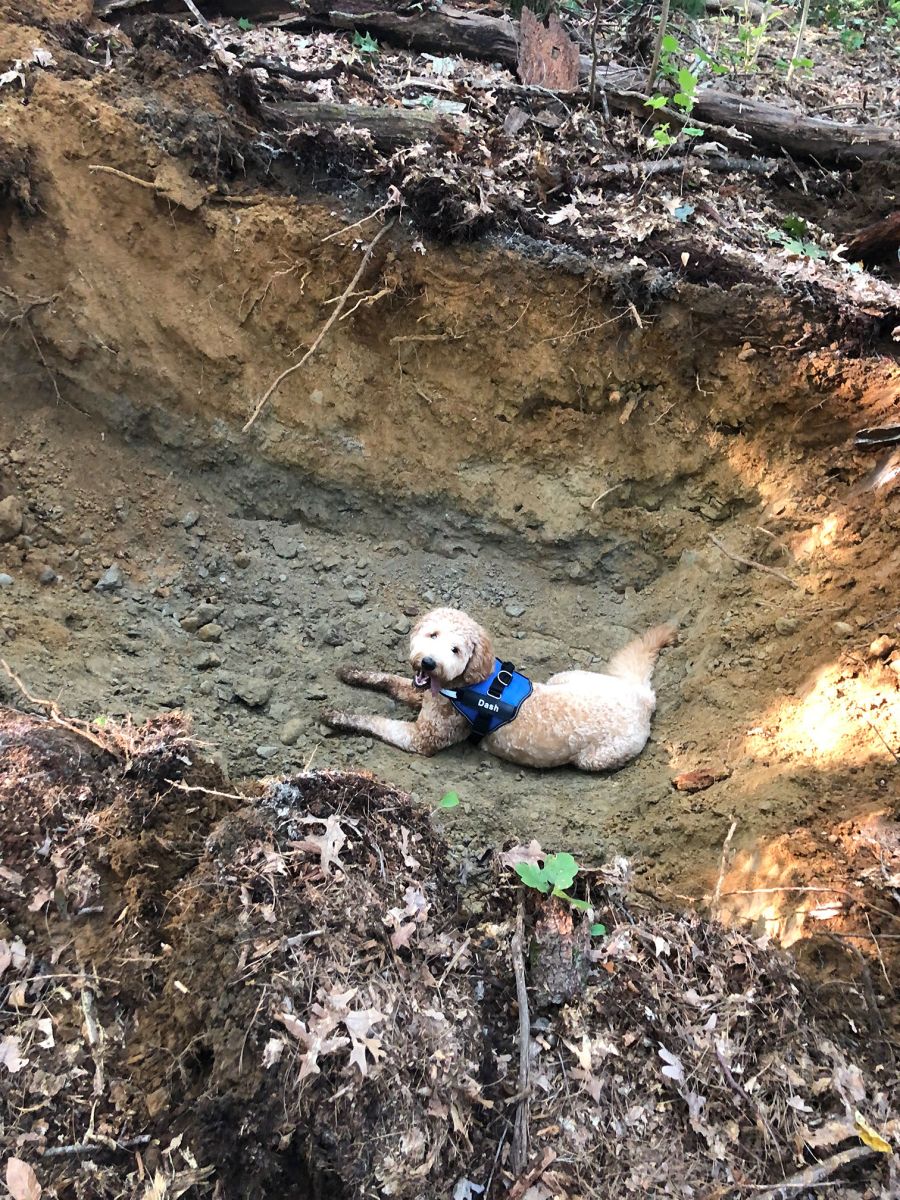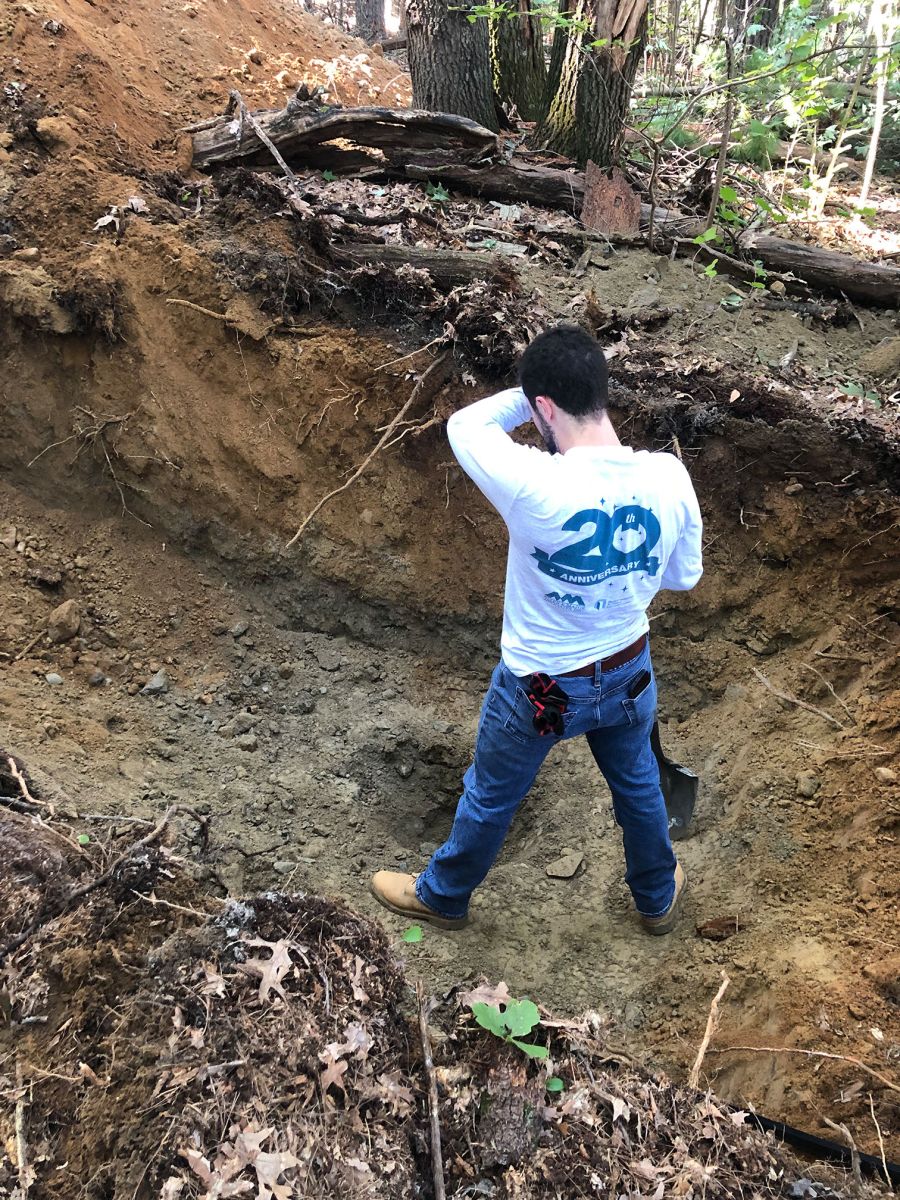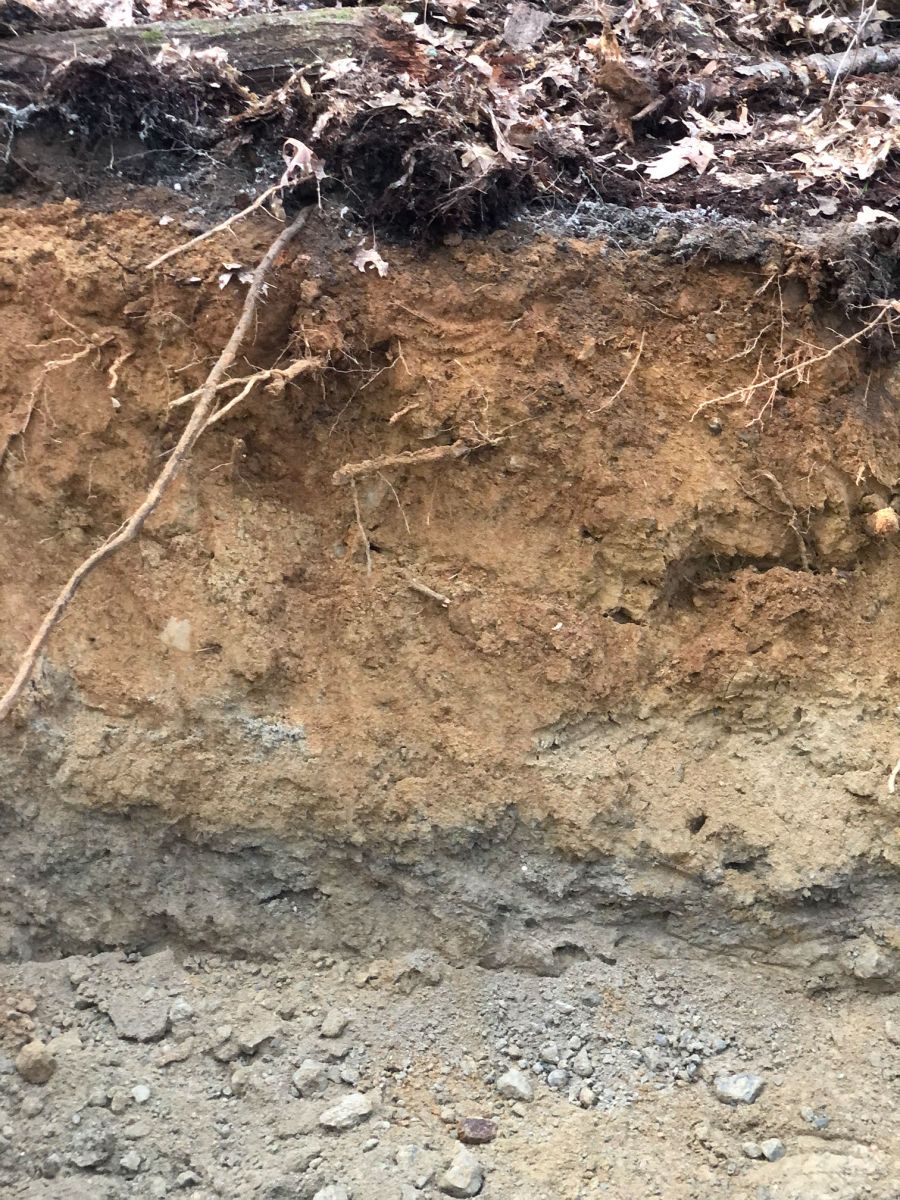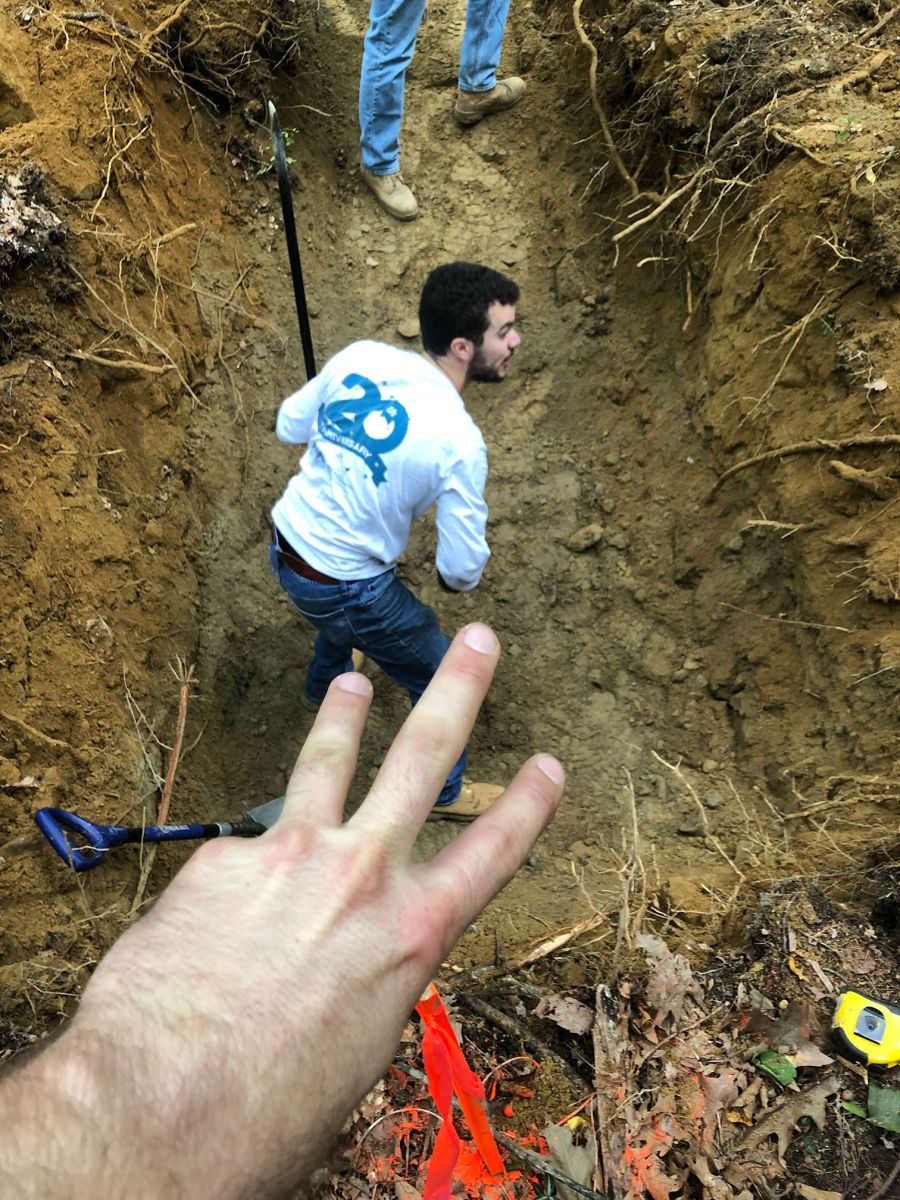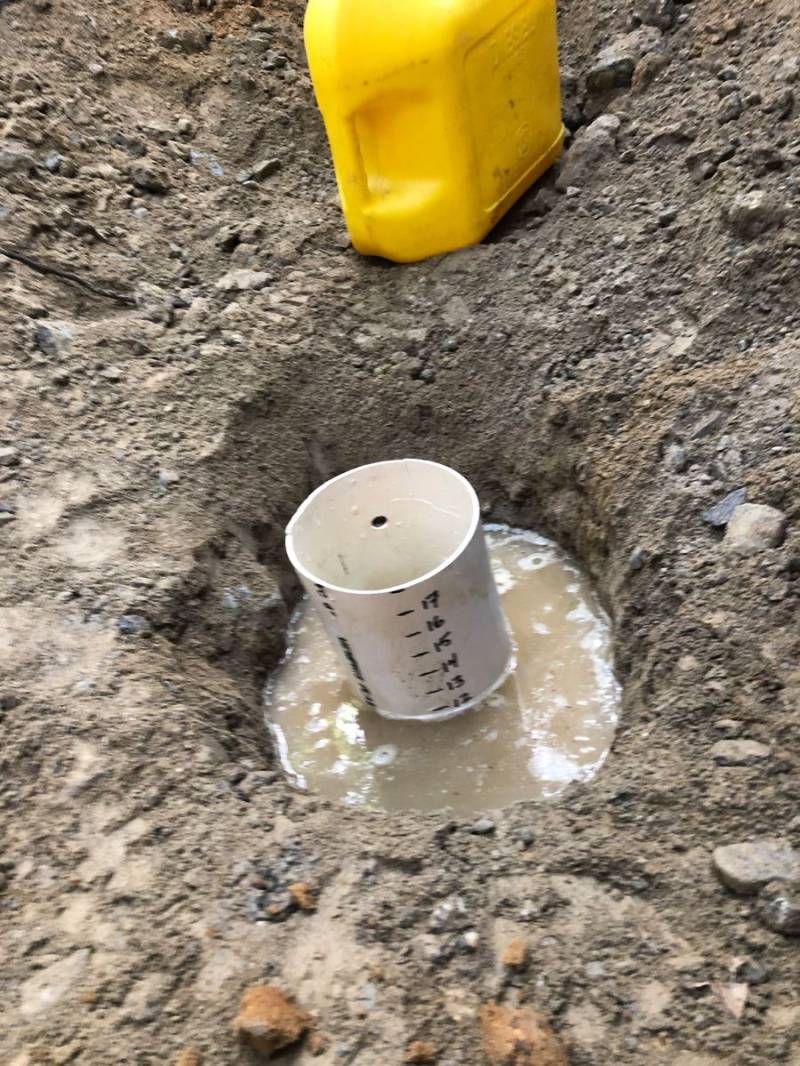
Test Pits and Percolation Tests (“Perc Test”) – Why They are Essential to Your Project
Test Pits are excavated in support of a Project to understand the subsurface conditions of the on-site soil. Test pits are required for two (2) main functions – for a Stormwater Management Plan (SMP) utilizing infiltration Best Management Practices (BMPs) and for a Title V septic system. Perc Tests for SMPs only require a deep hole test pit while Title V perc tests require a deep hole and percolation testing. Testing is performed by a Massachusetts Certified Soil Evaluator to ascertain the soil texture and color, as well as confirm the Estimated Seasonal High Groundwater Table (ESHGWT). Site soil testing includes a soil profile log and percolation testing logs known as a “Form 11” and “Form 12”.
The deep test pit is accomplished by the use of a backhoe, operator, and access to a water supply. The backhoe is contracted by the client and must be capable of digging to a depth of approximately sixteen feet (16’), though ten feet (10’) is more typical. Dig safe markings are required 72 hours before any excavation and are coordinated by the excavator operator. The Evaluator or Engineer is looking for the seasonal high-water table, the presence of rock ledge, fill material, or impermeable soil that will block absorption of water. The seasonal high-water table is identified visually by looking for “mottling,” which is splotches or streaks of “rusty” color in the soil indicating the occasional presence of water.
The percolation test is accomplished by digging a “shelf” next to the deep hole, to the top of the “C” layer (typically between 36-60” below the ground). A 12” diameter hole, 18” deep is then dug by hand and a ruler or tape measure placed within the hole. Water is poured into the hole up to the 12” mark and a 15-minute pre-soak period occurs. During this time, water is kept as close to 12” as possible; this acts to saturate the soil prior to measurement. Once the 15-minute presoak is over, the water is once again filled to the 12” line and the time is noted at the start when the water drops to 9”, and finally when the water drops to 6”. The amount of time it takes the water to drop from 9” to 6” divided by 3 will get you the infiltration rate of the soil in minutes per inch. During the process of a test pit, the Evaluator or Engineer can also evaluate the soil for drainage characteristics and the absorption rate of the soil. This is called a percolation (perc) test. A perc test determines the absorption rate of the soil for a septic field.
A deep hole test pit is required for both SMPs and Title V systems however a perc test is only necessary for Title V septic systems. In the case of a Title V septic system, a representative from the municipal Board of Health Department will need to be on hand to oversee and ensure that the test is being performed to their criteria and to confirm the results.
What to do if a Pec Test Fails? There are options if a perc test fails including:
Option 1 is to do additional tests in other locations.
- Option 2 is to test at different times of the year – the water table can fluctuate depending on seasons.
- Option 3 is spending a bit more on an engineered system
- Option 4 is a raised sand bed
- Option 5 is to ask your local health department under what circumstances they would reconsider their original determination
